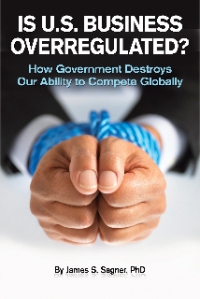 The year 2008 has been tumultuous, with economic changes that would have required decades in normal times. It required years of lobbying for the two major financial deregulation laws to be enacted; it took less than a month in early Fall to nationalize Fannie Mae and Freddie Mac; rescue and seize control of AIG, the world’s largest insurer; extend FDIC coverage to money-market funds and to increase bank deposit guarantees; temporarily ban short selling in nearly one thousand stocks in the financial industry; commit to the continuing liquidity of the commercial paper market; and provide $700 billion to assume control of non-performing bank loans, primarily mortgages.
The year 2008 has been tumultuous, with economic changes that would have required decades in normal times. It required years of lobbying for the two major financial deregulation laws to be enacted; it took less than a month in early Fall to nationalize Fannie Mae and Freddie Mac; rescue and seize control of AIG, the world’s largest insurer; extend FDIC coverage to money-market funds and to increase bank deposit guarantees; temporarily ban short selling in nearly one thousand stocks in the financial industry; commit to the continuing liquidity of the commercial paper market; and provide $700 billion to assume control of non-performing bank loans, primarily mortgages.
The major investment banks have disappeared, with Bear Stearns and Merrill Lynch now owned by commercial banks, and Goldman Sachs and Morgan Stanley becoming commercial banks. Of course, smaller investment banks exist for regional transactions, but the securities industry has been transformed in ways considered unthinkable even a year ago. How could this happen and what will be the new look of the financial system, both with regard to the financial companies providing the services and the corporations that depend on credit and equity to conduct their business operations?
Financial markets are probably inherently unstable, as banks and other institutions seek new methods to enhance the fairly small return from lending or fee-based activities. It is a struggle for a bank to earn one per cent on its asset base even in prosperous times, and the innovations developed by the quants were largely intended to enhance these fairly puny returns while limiting the amount of equity capital required to support normal activities.
Can government develop a better system to improve stability while avoiding the chaos that has recently been experienced? The history of federal law on finance has been uneven, with Congress often ready and willing to find a scapegoat rather than getting to the real sources of a problem. A positive result was President Roosevelt’s creation of the SEC (through the Securities Act of 1934), and for many years, it did a very credible job in supervising the investment banking industry.
A negative result was the Glass-Steagall Act of 1933 that separated commercial and investment banking for two-thirds of a century, on the theory that these institutions somehow caused the 1929 stock market crash. However, we now understand that there were other far more important causes, including the use of margin to buy stocks (as much as 90% of a stock’s cost could be margined or borrowed in those years), and the decline in farm prices throughout the Midwest and West Coast in the 1920s, due largely to mechanization, the use of fertilizer and overproduction, that eventually destroyed banks and small businesses in those areas.
In my next blog I’ll review likely government actions as changes are debated on the regulation of the financial markets.
Filed under: economics | Tagged: 1929 Stock Market Crash, Bear Stearns, Freddie Mac, Glass-Steagall Act, Merrill Lynch, Nationalize Fannie Mae, paper markets, Roosevel, SEC, Securities Act | Leave a comment »


